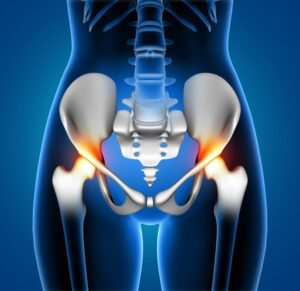
Why Do People Need Hip Joint Replacement?
- Osteoarthritis: Over time, the cartilage in the hip joint can wear down, causing pain and stiffness. This degenerative condition often leads to the need for a hip replacement to restore mobility and alleviate discomfort.
- Rheumatoid Arthritis: An autoimmune condition, rheumatoid arthritis causes inflammation of the joint lining, leading to pain and damage. Hip replacement surgery can provide significant relief and improve the quality of life for sufferers.
- Hip Fractures: Severe trauma or osteoporosis can result in hip fractures, which often require surgical intervention. Hip replacement is a common solution to restore function and reduce pain in such cases.
- Avascular Necrosis: Restricted blood flow to the hip bone causes the bone tissue to die, leading to joint collapse. Hip replacement can help in such situations by replacing the damaged joint with a prosthesis.
- Developmental Hip Dysplasia: Some people are born with hip joints that do not form properly, leading to wear and tear over time. Hip replacement can correct this abnormality, alleviating pain and improving joint function.
Types of Hip Joint Replacement
- Total Hip Replacement (THR): This is the most common type of hip replacement, where both the acetabulum (hip socket) and the femoral head (thighbone head) are replaced with prosthetic components. It aims to alleviate pain and improve function in patients with severe hip joint damage.
- Partial Hip Replacement (Hemiarthroplasty): In this procedure, only the femoral head is replaced while the natural acetabulum is left intact. It is often performed for certain types of hip fractures, particularly in older adults.
- Hip Resurfacing: Unlike total hip replacement, this procedure involves capping the femoral head with a smooth metal covering rather than replacing it. It is usually recommended for younger, more active patients as it preserves more of the natural bone.
- Revision Hip Replacement: This type of surgery is performed when a previous hip replacement fails or wears out. It involves removing the old prosthesis and replacing it with a new one, which is more complex than the initial surgery.
- Minimally Invasive Hip Replacement: This technique uses smaller incisions compared to traditional hip replacement surgeries, aiming to reduce muscle damage and speed up recovery. It can be applied in both total and partial hip replacement procedures.
The Surgery Process
- Preoperative Preparation: Before the surgery, patients undergo a thorough medical evaluation to ensure they are fit for the procedure. This includes blood tests, imaging studies, and consultations with the surgical team to discuss the procedure and postoperative care.
- Anesthesia: The choice of anesthesia depends on the patient’s health, preferences, and the surgeon’s recommendation.
- Incision and Exposure: The surgeon makes an incision over the hip joint to access the damaged joint. Depending on the surgical technique, the incision can be anterior (front), posterior (back), or lateral (side).
- Removing Damaged Tissue: The damaged cartilage and bone are carefully removed from the hip joint. The femoral head is removed, and the acetabulum is cleaned and prepared to receive the new components.
- Implanting Prosthesis: The surgeon inserts the new hip components, which include a metal or ceramic ball that replaces the femoral head and a metal socket that replaces the acetabulum. These components may be fixed with bone cement or designed to allow the bone to grow into them.
- Closing the Incision: After ensuring the new joint is properly aligned and functions well, the surgeon closes the incision with sutures or staples. A sterile dressing is applied to the wound to protect it during the initial healing phase.
- Postoperative Recovery: The patient is moved to a recovery area where they are monitored as the anesthesia wears off. Pain management, physical therapy, and rehabilitation plans are initiated to promote healing and restore mobility.
- Rehabilitation and Follow-up: Physical therapy begins soon after surgery to help the patient regain strength and mobility in the hip. The medical team schedules regular follow-up appointments to monitor progress and address any complications.
Conclusion
Hip joint replacement can be a game-changer, restoring mobility and reducing pain for many individuals. By understanding the procedure, preparing adequately, and following post-surgery guidelines, patients can look forward to a better quality of life.
